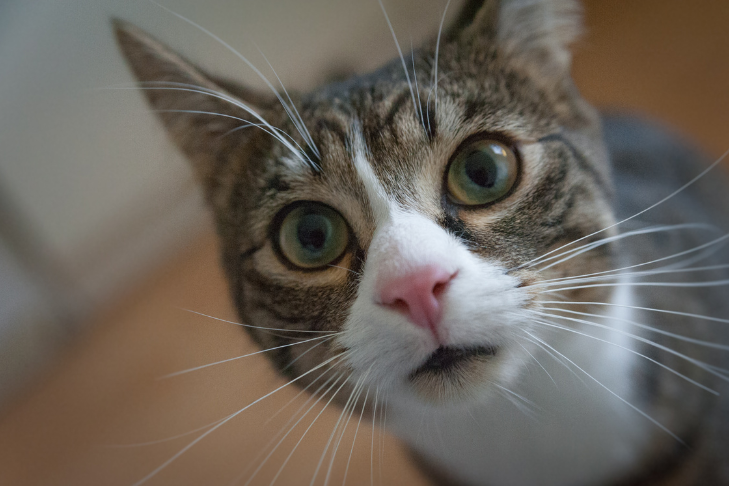Common Health Issues in Cats

Your cat may be a confident hunter and a meticulous groomer, but they still rely on you to help them stay healthy. From everyday issues like hairballs to more serious conditions like diabetes or arthritis, cats are prone to a wide range of health concerns throughout their lives.
We’re breaking down some of the most common cat health problems and natural ways to support your feline’s well-being at home.
1. Vomiting
Occasional vomiting is common in cats and can be triggered by hairballs, eating too fast, or dietary indiscretions. However, frequent vomiting may be a sign of something more serious, such as infections, kidney disease, or diabetes.
Symptoms to watch for:
- Drooling
- Lethargy
- Frequent meowing or restlessness
- Loss of appetite
Chronic vomiting can also indicate gut imbalance. Supporting your cat's digestion with the proper nutrition can help regulate the gut flora.
2. Feline Lower Urinary Tract Diseases (FLUTD)
FLUTD includes a group of conditions affecting the bladder and urethra. It's painful and potentially life-threatening, especially if your cat cannot urinate.
Symptoms include:
- Straining to urinate
- Crying in the litter box
- Blood in urine
- Licking the groin
- Urinating outside the box
Seek veterinary care immediately if you notice these signs.
3. Fleas and Parasites
Even indoor cats can develop flea infestations—fleas can hitch a ride into your home on clothing, shoes, or other pets. Left untreated, fleas can cause intense itching, hair loss, skin irritation, and even anemia in severe cases. If your cat ingests a flea while grooming, it can also lead to a tapeworm infection.
Prevention & Treatment Tips:
- Use a monthly flea preventative that’s gentle on your cat’s system — natural options are available.
- Regularly comb your cat’s fur with a flea comb to catch early signs.
- Keep your home clean, wash bedding frequently, and vacuum carpets and furniture often to reduce flea populations.
If your cat shows signs of flea or tapeworm issues, talk to your vet about the best treatment plan. Clearing up fleas is essential before treating for tapeworms.
4. Diarrhea
Diarrhea in cats can result from dietary changes, infections, stress, or parasites. If left untreated, it can quickly lead to dehydration and additional health concerns.
What to Do:
- Provide clean, fresh water at all times to prevent dehydration
- Withhold food for 12 hours, then offer a bland diet (like plain boiled chicken or rice)
- If symptoms persist beyond 24 hours, consult your veterinarian
Consistent digestive support can make all the difference in helping your cat recover quickly and avoid future flare-ups.
5. Eye Problems
Cats can develop eye issues like conjunctivitis, ulcers, or cataracts.
Signs to look for:
- Cloudiness or discharge
- Squinting or excessive blinking
- Red or swollen eyelids
Eye problems often require urgent vet care to prevent long-term damage.
6. Upper Respiratory Infections
Like humans, cats can catch colds caused by viruses and bacteria. Kittens, seniors, and immunocompromised cats are most at risk.
Supportive care tips:
- Use a humidifier or run a hot shower to steam the room
- Gently clean nasal discharge
- Use saline drops to help clear congestion
7. Feline Immunodeficiency Virus (FIV)
FIV weakens the immune system over time. Though there’s no cure, many cats with FIV live long, healthy lives with proper care and reduced stress.
8. Feline Leukemia Virus (FeLV)
FeLV is one of the most common infectious diseases in cats. It suppresses the immune system and can lead to other illnesses. Annual testing and keeping infected cats indoors is essential.
9. Heartworm Disease
While more common in dogs, heartworm also affects cats and is spread by mosquitoes. Preventative treatments are the best defense.
10. Arthritis
Arthritis causes discomfort and stiffness, especially in older cats. Look for signs like limping, hesitation to jump, or changes in grooming behavior.
Natural support options:
- Weight management
- Comfortable bedding and ramps for mobility
11. Ringworm
A contagious fungal infection that causes hair loss and red, scaly patches on your cat’s skin. Ringworm is zoonotic, meaning it can spread to humans and other pets.
12. Worms
Cats can become infected with roundworms, hookworms, or tapeworms. Common symptoms include bloating, vomiting, or visible worms in stool.
13. Rabies
Rabies is a fatal viral disease affecting the nervous system. Vaccination is critical for prevention, especially for outdoor or rescue cats.
14. Cancer
Cancer can appear as lumps, wounds that won’t heal, weight loss, or changes in behavior. Early detection and treatment can greatly improve outcomes.
15. Diabetes
Feline diabetes affects the body’s ability to regulate blood sugar levels. Weight management, a proper diet, and insulin therapy are essential for managing the disease.

Keeping Your Cat Healthy Year-Round
Cats may be independent by nature, but they rely on us to monitor their health, provide preventive care, and respond to early warning signs. From digestive upset to more serious conditions like arthritis or diabetes, staying informed is essential.
Incorporating holistic and natural support can be a simple yet effective way to help keep your cat’s digestive system balanced, immune system strong, joints comfortable, and overall well-being supported—especially as they age or face environmental stressors.
When in doubt, always consult your veterinarian—and never underestimate the impact of nutrition, routine care, and love in helping your cat live a long, healthy life.


